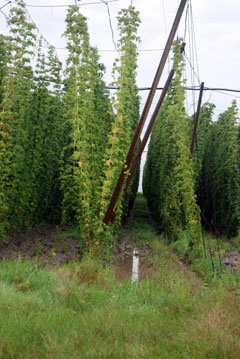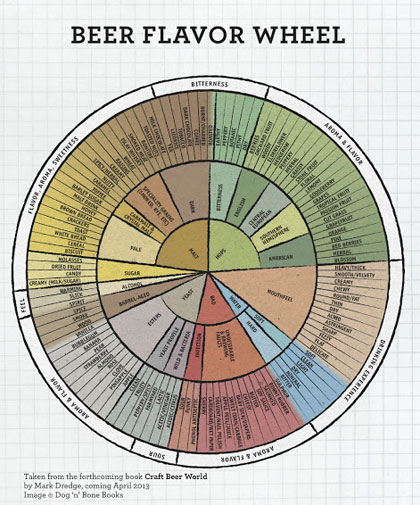 Earlier today, Win Bassett pointed to a story about interest in hop growing in North Carolina (which led to a lengthy Twitter exchange of which I was a part and should have done a better job of keeping educational).
Earlier today, Win Bassett pointed to a story about interest in hop growing in North Carolina (which led to a lengthy Twitter exchange of which I was a part and should have done a better job of keeping educational).
To its credit, the story examined the challenges of growing hops in North Carolina, including that the state is closer to the equator than major hop producing regions, so the days are shorter than ideal for hop growing.
This bit, however, is a little troubling. North Carolina State University Horticulturist Jeanine Davis, who has prodded along some excellent research, might reconsider the idea that growers are going to tell brewers what hops to use, and by extension drinkers what hops to drink.
Davis points out there are now some hops varieties that are more daylight neutral and require less daylight than varieties grown in most areas of the world.
“These day-length neutral varieties, bred in South Africa, are the ones we need to use in North Carolina,” she says.
“Brewers will likely ask for more commonly known aromatic hops, but any new grower should grow hops varieties suited for production in North Carolina, and then convince the brewer to use these varieties,” she adds.
“There are some indications that growing day-length sensitive varieties here in North Carolina is severely limiting our yields. In some cases, we may be losing up to 85 percent of potential yield, just because we are trying to grow the wrong varieties.”
Within a few years, Sierra Nevada Brewing and New Belgium Brewing will be making a lot of beer in North Carolina. Right now, they make a lot of beer in California and Colorado, respectively, and they use only a little bit of California- or Colorado-grown hops, respectively. There’s a lesson there.
In 2011 (removing all numbers related to China because it is relatively insular) farmers in Germany and the American Northwest produced 85 percent of the world’s alpha/bitter hops and 67 percent of the aroma. The Czech Republic sold another 16 percent of the aroma. Scores of other countries grow hops, often just for their home market, but the Northwest and Germany set expectations for price, quality, and variety.
This doesn’t mean that farmers in North Carolina, Colorado, Wisconsin, Michigan, even southern California can’t succeed in selling a certain amount of local hops. But success won’t come overnight. Breeding new hop varieties, perhaps some more suited to local environments and day length, takes time. Goofy as it sounds, that organic hops naturally result in lower yields and are more expensive to produce sort of levels the playing field — or at least reduces the advantage farmers have in the dominant hop growing regions. So maybe organic hops, grown on low trellises, will be part of the equation.
It will take time, patience, education, luck, all that stuff, and then we will see what happens.
Gorst Valley Hops in Wisconsin has been out front of all of this, working directly with growers, supporting them throughout the process that starts with planning a yard and continues through building their own version of an oast house.
“Some people perceive local as having value. Local’s great, but it can’t be the only part of our plan,” said James Altweis of Gorst Valley. “If a brewer doesn’t see the improvement, then he’s not going to pay the higher price.”
And higher prices must be part of the equation. “We have to look for what we can do on process that adds value, that creates differences apparent in the final beer,” Altweis said.
I don’t mean to be a curmudgeon, although I suppose I am, who points out the challenges every time a local hops story appears, but growing hops is hard and that chance for a bad ending shouldn’t be overlooked. For farmers or brewers (how would you like to contract for a chunk of hops with a single farmer and have the crop go kaput?). Nearly one-third of Polish hop farmers quit growing hops in 2010 and 2011. There were several reasons, including that Polish breweries apparently quit buying as much Polish hops, but one-third, and in an environment well-suited for hops.

 Earlier today, Win Bassett pointed to a story about
Earlier today, Win Bassett pointed to a story about  Showing the organization you might expect from a homebrewer, as long as that homebrewer is not me, John at Homebrew Manual has posted and neatly organized the roundup for
Showing the organization you might expect from a homebrewer, as long as that homebrewer is not me, John at Homebrew Manual has posted and neatly organized the roundup for